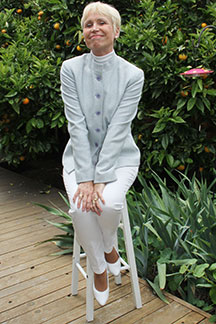Every year, the organizers of the Hannover Messe (Hanover Trade Fair) in Germany invite a leading industrialized nation to be a partner country. In 2016, the United States will be this guest of honor at the world’s biggest trade fair for industrial technology. U.S. President Barack Obama will address the opening ceremonies on 24 April and join German Chancellor Angela Merkel for the traditional opening tour the following day. It is the first time since 1996 that the United States will have partner status at the Hannover Messe. And it is the first time in history that a sitting American president will participate in the fair. What does it mean to be a partner country?
The Hannover Messe attracts approximately 6,500 exhibitors and 200,000 visitors from around the world. Partner countries are given the opportunity to showcase themselves as an attractive place for investment and to reinforce their reputation as manufacturers of competitive, high-quality products.
How long has the Hannover Messe been in existence?
The fair had its start in 1947, two years after World War II had ended. Germany’s economy was broken and the country was divided into four occupation zones. (http://www.walled-in-berlin.com/j-elke-ertle/allied-control-council-governs-germany) Hannover was located in the British zone.
In an attempt to give Germany’s shattered economy a shot in the arm, the British military government mandated a trade fair. An “Export Messe Hannover” was put together in just 99 days. Its humble motto was, “Export instead of Resign.” That first fair took place in an undamaged factory building near Hannover. Almost all the exhibitors and visitors were German. The two highlights of the fair were the smallest diesel motor in the world and an artificial tooth. Still, “Export Messe Hannover” was a hit.
From Fischbroetchenmesse to Hannover Messe
In 1947, food rationing was still in effect in Germany. To attract customers and exhibitors, fair officials offered Fischbroetchen (fish hoagies) without requiring ration cards. Fish hoagies are crispy buns filled with fish, onions, sour pickles and tarter sauce. Quickly, the fair became known as the Fischbroetchenmesse (fish hoagie fair). The small trade fair was repeated the next year and the year after that. Eventually, it morphed into the world’s biggest trade fair for industrial technology, surpassing in popularity the already established Leipzig Trade Fair.
U.S. involvement in the 2016 Hannover Messe
Each year, exhibitors showcase new products along the entire industrial chain on 5.3-million square feet of fairgrounds. This year, approximately 250 U.S. companies will exhibit between 25 April and 29 April. American manufacturers will have an opportunity to grow their operations into Europe and Asia, and German manufacturers may find ways of expanding their operations into the United States.
For a sneak peek at the first 20+ pages of my memoir, Walled-In: A West Berlin Girl’s Journey to Freedom, click “Download a free excerpt” on my home page and feel free to follow my blog about anything German: historic and current events, people, places and food.
Walled-In is my story of growing up in Berlin during the Cold War. Juxtaposing the events that engulfed Berlin during the Berlin Blockade, the Berlin Airlift, the Berlin Wall and Kennedy’s Berlin visit with the struggle against my equally insurmountable parental walls, Walled-In is about freedom vs. conformity, conflict vs. harmony, domination vs. submission, loyalty vs. betrayal.













